Best Facelift in Seattle and Bellevue
What is A Facelift?
A facelift is a surgical procedure that reverses many of the signs of aging in the lower face and neck. With aging, the skin, connective tissue, and muscles loose elasticity and begin to sag. As the skin and fat from the face descends, it obscures the jawline and creates what are known as jowls. A facelift is almost always combined with a neck lift to address extra skin and loose muscle that creates banding and a saggy appearance under the chin (what many patients call a “turkey neck”.) A facelift addresses these issues by repositioning the fat and muscle back to its youthful elevated position and removes the extra saggy skin. Facelifts are one of Dr. Scott’s favorite procedures to perform due to the dramatic improvement that they can make in how a patient looks and feels about themselves. Facelifts have a very high satisfaction rate.
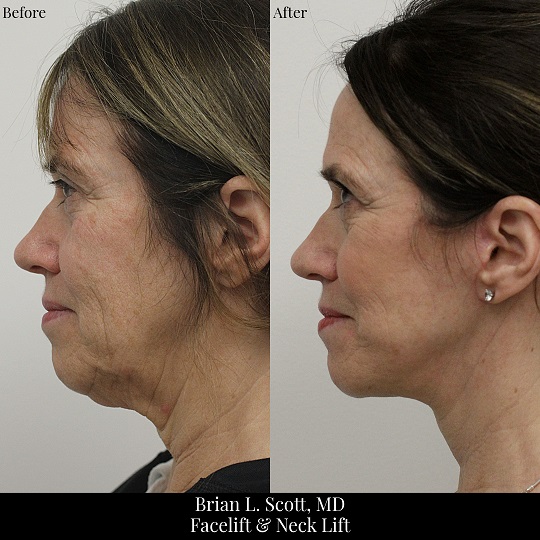
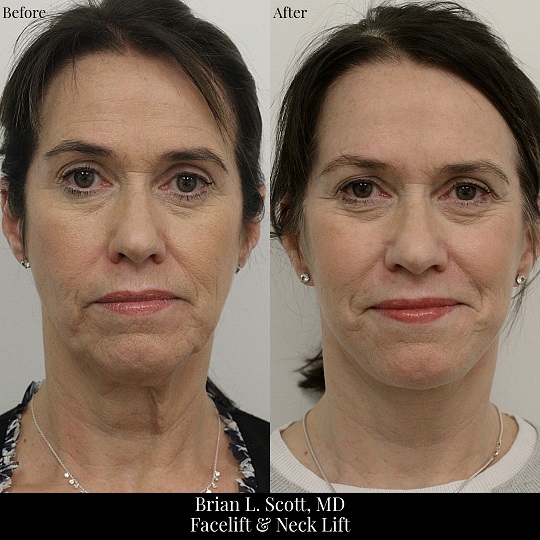
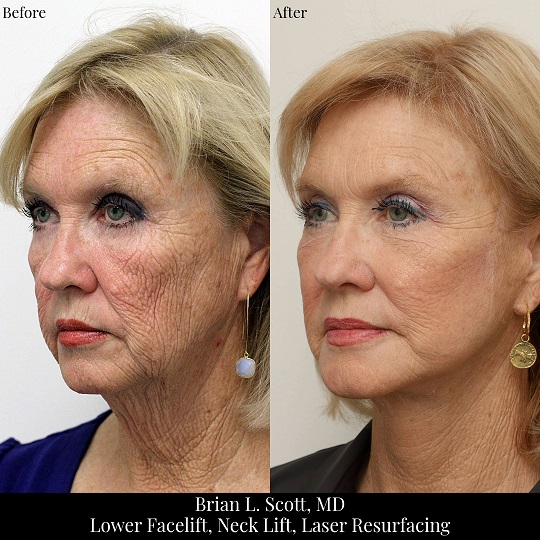
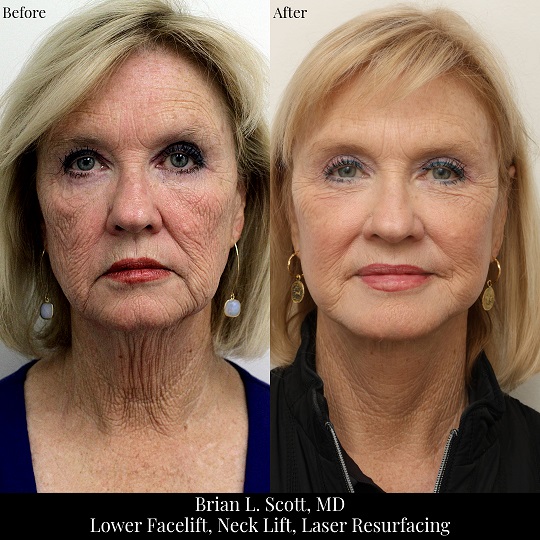
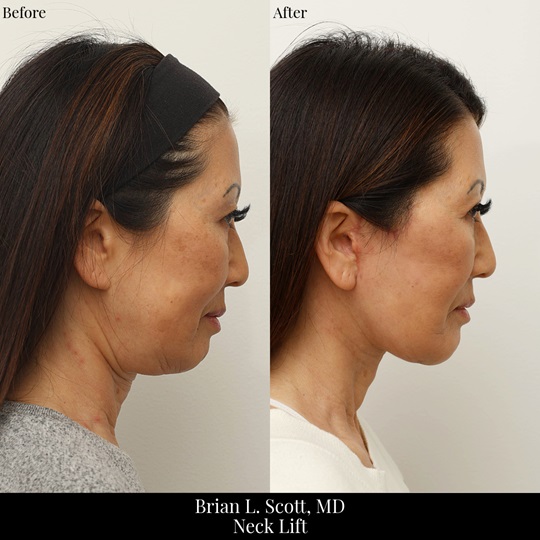
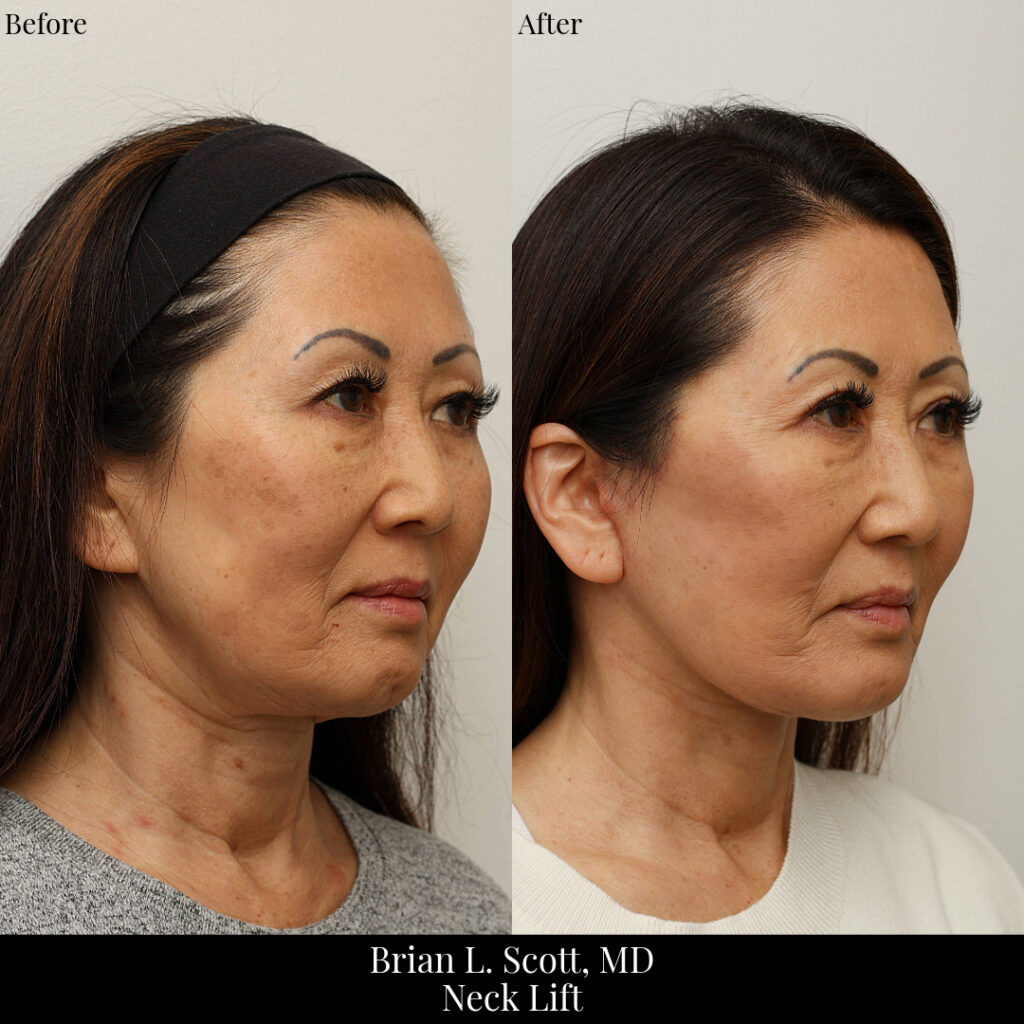
Dr. Brian Scott performs facelift and neck lift surgery for patients from Seattle, Bellevue, Kirkland, Redmond, Sammamish, Issaquah, Tacoma, Bellingham, Portland, and the surrounding areas in Oregon and Washington. Additional before & after photos are available for viewing in-office.
What are the different types of facelifts?
There are many different types of facelifts (mini facelifts, S lift, High SMAS lift, mid face lift, deep plane facelift etc.) and it can be very confusing as a patient trying to understand what the differences are and which is best. During his plastic surgery training in New York City, Dr. Scott trained under the top facelift surgeons in the county and can perform all styles of facelifts. For the majority of patients, the best outcomes are achieved with a deep plane facelift.
What is a Deep Plane Facelift?
A deep plane facelift is a more advanced technique for facelifting. Traditional techniques for facelifting involve tightening and removing extra skin, but do little to address the deeper fat and muscles which have also sagged with time. Since a traditional facelift requires pulling hard on the skin to try and lift the entire face and neck, they have a greater tendency to make the face look stretched and tight. A deep plane facelift repositions the deeper tissues so all of the tension is on the layers underneath the skin. As a result, a deep plane facelift leads to a more natural looking facelift and also lasts longer than a traditional facelift. Although I am able to perform all of the different types of facelifts, for most patients, the deep plane facelift leads to the best and most natural looking lift. Most surgeons aren’t comfortable performing a true deep plane facelift so they instead offer simpler lifts.
What is the recovery lIke after a Facelift?
Surgery is performed in our fully accredited surgical suite. Patients will arrive the morning of surgery and leave for home in the early afternoon. In general, a facelift is not very painful. Most patients use tylenol for pain control but we also provide prescription pain medication in case something stronger is needed. Patients are able to walk around the day of surgery, but we ask them to avoid heavy exercise for two weeks.
Patients will have a gauze bandage wrap around their heads for the first night. I do not typically use drains. The day after surgery, the patient will come back to the office and the headwrap will be removed. The incisions are cleaned and the patient is shown how to clean their incisions at home. Patients can expect some swelling and bruising in their face and neck which usually peaks 2-3 days after surgery and then begins to rapidly improve. Patients come back 1 week after surgery for removal of some of the surgical staples and sutures. The rest of the sutures are removed 2 weeks after surgery. By the 2 week mark, most of the swelling and bruising has resolved. At that point, most patients return to work, exercise, and all of their normal activities. It is normal to have some numbness around the ears and cheeks which improves over the course of a few months.
Frequently Asked Questions
A good candidate for a facelift has signs of aging such as saggy skin, a poorly defined jawline, banding in their neck, or jowling. Patients should be overall healthy without serious heart or lung diseases. Most patients who have a facelift are between the ages of 45-75, although some people who are younger or older than this may also benefit. Both men and women can benefit from a facelift.
The best age to have a facelift is after signs of aging have developed, but before developing the health problems associated with old age Most patients who have a facelift are between the ages of 45-75, although some people who are slightly younger or older than this may also benefit.
In general, a facelift is not very painful. Patients can expect a sensation of tightness which improves as the swelling resolves. Most patients use tylenol for pain control but we also provide prescription pain medication in case something stronger is needed.
In general, a facelift is a safe procedure and most patients heal without issue. However no procedure is completely without risk. Some of the main risks of a facelift include bleeding (hematoma), infection, scarring, numbness, asymmetry, and nerve injury. Overall, complications are rare and most problems typically resolve completely with time.
The surgery is performed by making an incision that starts at the temple hairline, extends around the ears and ends in the lower scalp. Although the incision is visible during the healing phase, it fades over a few months and becomes nearly invisible. I spend a great deal of time making sure my facelift incisions are closed as perfectly as possible and as hidden as possible in natural skin folds and in the hairline. As you can see in the photos below, the facelift incision is pink at 2 weeks but has noticeably faded by 2 months. For some patients, the incision takes a bit longer to fully fade but eventually it become a fine white line.
A facelift can be performed under twilight anesthesia or with the patient completely asleep
Thread lifts can lead to minor improvements in facial appearance, with results that last about a year. Thread lifts have a complication rate similar to surgery, but lead to less improvement in the signs of facial aging compared to a facelift. Thread lifts may also lead to scarring which can make performing a facelift down the road more risky. For these reasons, Dr. Scott does not recommend or offer thread lifts for his patients. Many medspas and aesthetic providers offer thread lifts because they do not have the training to perform a facelift, not because they are a replacement for a facelift or neck lift. If they worked well, Dr. Scott would offer them to his patients.
